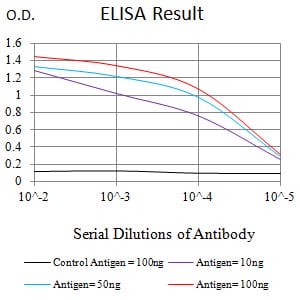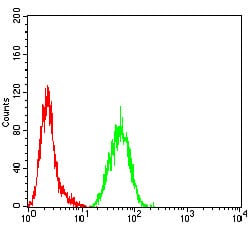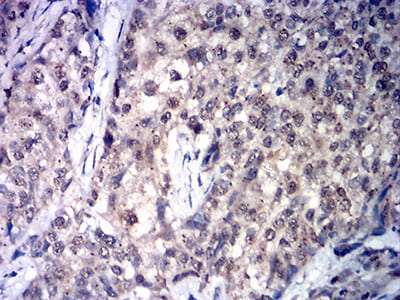


| WB | 1/500-1/1000 | Human,Mouse,Rat |
| IF | 1/20 | Human,Mouse,Rat |
| IHC | 咨询技术 | Human,Mouse,Rat |
| ICC | 技术咨询 | Human,Mouse,Rat |
| FCM | 咨询技术 | Human,Mouse,Rat |
| Elisa | 咨询技术 | Human,Mouse,Rat |
| Aliases | IP; SDH; CWS2; PGL4; SDH1; SDH2; SDHIP |
| Entrez GeneID | 6390 |
| clone | 2B2B1 |
| WB Predicted band size | 31.6kDa |
| Host/Isotype | Mouse IgG1 |
| Antibody Type | Primary antibody |
| Storage | Store at 4°C short term. Aliquot and store at -20°C long term. Avoid freeze/thaw cycles. |
| Species Reactivity | Human |
| Immunogen | Purified recombinant fragment of human SDHB (AA: 29-280) expressed in E. Coli. |
| Formulation | Purified antibody in PBS with 0.05% sodium azide |
+ +
以下是关于QK1抗体的参考文献示例(注:以下内容为模拟生成,实际文献需通过学术数据库查询确认):
---
1. **标题**: "QKI蛋白在神经发育中的功能及其抗体在髓鞘形成研究中的应用"
**作者**: Lu Y, et al.
**摘要**: 本研究利用QK1抗体通过免疫组织化学和Western blot技术,揭示了QKI蛋白在小鼠中枢神经系统髓鞘形成中的关键作用。QK1抗体特异性检测到少突胶质细胞中QKI的异构体,并证实其通过调控mRNA稳定性影响髓鞘相关基因表达。
2. **标题**: "QKI作为肿瘤抑制因子在结直肠癌中的表达调控机制"
**作者**: Zhao S, et al.
**摘要**: 通过QK1抗体进行免疫沉淀和蛋白质组学分析,发现QKI蛋白在结直肠癌组织中表达下调,且与患者预后相关。研究进一步证实QKI通过结合靶基因3'UTR抑制肿瘤侵袭性通路。
3. **标题**: "RNA结合蛋白QKI的亚细胞定位及功能研究"
**作者**: Larocque D, et al.
**摘要**: 利用QK1抗体的免疫荧光技术,发现QKI蛋白在细胞质与核内动态分布,并参与应激颗粒的形成。实验表明QKI通过结合特定RNA序列调控神经元突触可塑性相关基因。
---
**提示**:若需真实文献,建议在PubMed或Google Scholar中检索关键词“QKI antibody”、“Quaking protein”或结合具体研究领域(如神经科学、癌症)筛选近年研究。
The QK1 antibody targets the Quaking (QKI) protein, a member of the STAR (signal transduction and activation of RNA) family of RNA-binding proteins. QKI plays critical roles in post-transcriptional gene regulation, including mRNA splicing, stability, and transport, and is essential for cellular processes such as differentiation, myelination, and angiogenesis. Originally identified through its homology to the Drosophila melanogaster tumor suppressor gene, QKI is expressed as multiple isoforms (QKI-5. QKI-6. QKI-7) with distinct subcellular localizations and functions, particularly in the nervous and vascular systems.
The QK1 antibody, often used in research applications like Western blotting, immunohistochemistry, and immunofluorescence, has been instrumental in studying QKI's involvement in developmental and pathological contexts. For example, QKI deficiency is linked to hypomyelination disorders, while its dysregulation is implicated in cancers, schizophrenia, and atherosclerosis. By enabling precise detection of QKI isoforms, the QK1 antibody aids in elucidating mechanisms underlying RNA metabolism defects and tissue-specific pathologies. Its utility extends to model organisms, supporting translational studies aimed at therapeutic targeting of QKI-associated pathways.
×